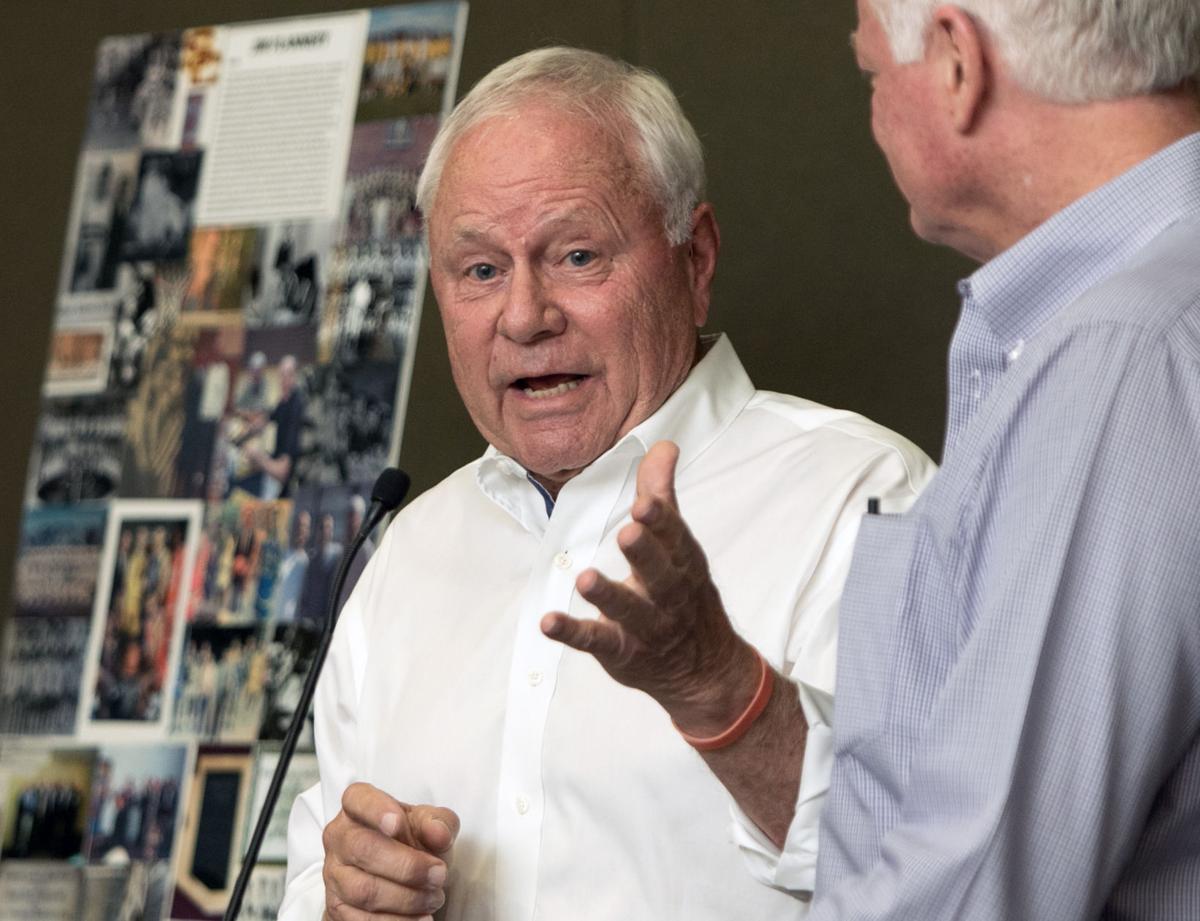Dick Tomey has written a book. He writes that it is about “quarterback sacks, blocked kicks, apples, oranges and muddle huddles.”
Of course it is.
No book by Dick Tomey would be about wins and losses or fame and fortune.
Muddle huddles. It’s poetry.
Tomey’s new book — “Rise of the Rainbow Warriors” — is about his 10 seasons at Hawaii, a prelude to his Arizona days, in which he learned to walk on hot coals (true story) and created so much love and kinship that he says “I bawled my eyes out” when telling the Rainbow Warriors he was moving to Tucson.
Ordinarily, a football coach writes a book to remind people of his many triumphs and to feed a super-sized ego. Not this book. It’s not about Tomey as much as it is about the ballplayers and coaches at Hawaii from 1977-86 — men named Sapolu, Noga, Ellerson and Niumatalolo — and about the failure to take down the mighty football dragon that was BYU.
Tomey’s first office at Hawaii was in a “dilapidated Quonset hut.”
His first contract was an afterthought. “We didn’t talk salary when I was hired,” he writes. A few days later he signed a contract for $30,000 a year.
The Rainbow Warriors had none of the amenities so abundant in modern college football. During training camp they lodged at the “Rainbow Hilton.” It was the floor of a gymnasium filled with mattresses.
Somehow, starting from scratch, Tomey’s Rainbow Warriors filled a 50,000-seat stadium, challenged mega-powers Oklahoma, Nebraska and USC and proved that a football coach didn’t have to be a F-bomb- dropping drill sergeant to get the job done.
I was eager to read Tomey’s book because I thought, at last, he would go into detail about his early days: his childhood in Michigan City, Indiana; his playing days — he was a guard at DePauw University — and his fascinating climb up the coaching ladder.
At Arizona from 1987-2000, Tomey was not an open book. He was accessible and approachable but he’s not an it’s-about-me personality. He would reflect on his players and on his coaching staff — he was a big-picture guy, willing to put a football game in perspective — but if the topic was Dick Tomey, you didn’t get much of a story.
I saw his temper flare once: after Arizona’s kicker missed a late field goal in a loss at Arizona Stadium. Several reporters crowded around the kicker after the game, asking what went wrong.
Tomey picked up a folding chair and threw it against a wall. The crowd scattered.
He was the Great Protector in Tucson and at Hawaii. That connection is clear in his book; Tomey didn’t just scribble down his memories of 10 seasons at Hawaii. He and his publishing partner, Honolulu journalist Lance Tominaga, interviewed more than 150 former Rainbow Warriors, coaches and fans to produce the manuscript.
It is excellent.
It also provided answers to some of the “how did Dick Tomey become a football coach?” questions I’ve had for 30 years.
The son of Dale and Lucille Tomey grew up in Small Town, America. His father earned a civil engineering degree at Purdue and worked as a mason and at the Indiana Limestone Company. Dick’s grandpa was a mortician.
Lucille Tomey died tragically in 1954, after a fall in her home. Dick was only 16. His mother’s obituary says she “loved Christmas and liked to write.”
Tomey was not a five-star athlete.
“I was called ‘Tubby,’” he writes.
He was a walk-on at DePauw, earning a degree in economics. That econ degree led to a job at School 86 in Indianapolis. He supervised the lunch room and safety patrol and coached the football, basketball and track teams.
His life forever changed when the father of one of his pupils suggested Tomey drive to Miami of Ohio and apply for a job on the football staff. It was a shot in the dark, but, after becoming a dormitory advisor at the school, Tomey was accepted as a volunteer coach on John Pont’s staff.
That’s when a young coach you might’ve heard of — Bo Schembechler — replaced Pont and saw enough in Tomey to give him a berth as a volunteer coach.
Tomey saw a side of the charismatic Schembechler that most fans did not.
“Bo had this great humanity about him,” Tomey writes. “He showed it to his team constantly.”
That “great humanity” became the hallmark of Tomey’s coaching career, one that went from Miami of Ohio to Northern Illinois to Davidson to Kansas to UCLA and then to Hawaii.
You could write a book about that journey.
In the summer of 1977, the Rainbow Warriors needed a football coach and a new direction. Tomey, then an assistant at UCLA, was one of four finalists. The school seemed sure to hire Washington defensive coordinator Jim Mora but, as Tomey writes, “the other three guys all dropped out.”
The guard people used to call “Tubby” got the job.
It’s a true story. Now at last, you can read all about it.





